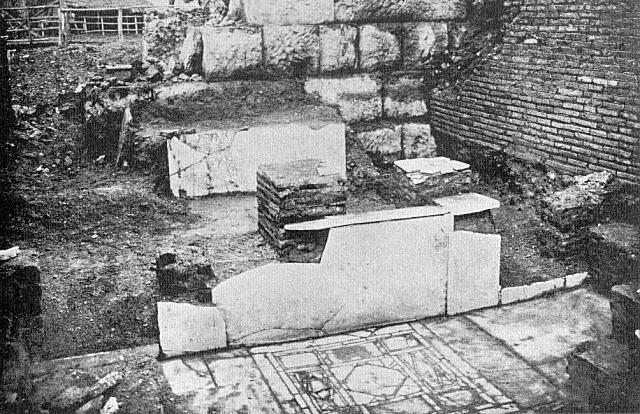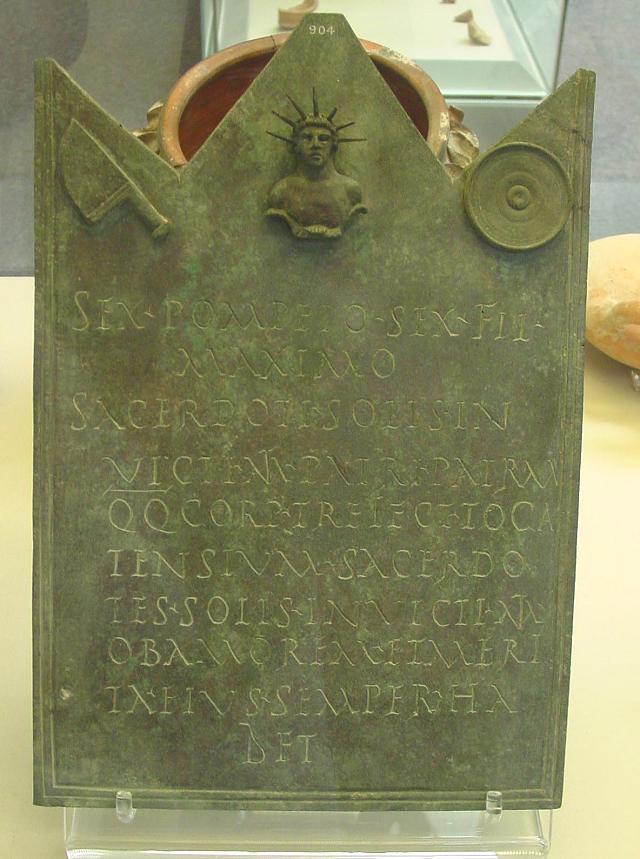Biography
of Sextus Pompeius Maximus
- Sextus Pompeius Maximus was a Pater of the Mitreo Aldobrandini.
- Active 4th quarter of 2nd century in Ostia, Latium (Italia).
TNMP 16
Sextus Pompeius Maximus, 'father of the fathers'. Apparently he was the leader of the cult of Mithras in Ostia. We also learn that he was in charge of one of Ostia's ferry services.
The Mithreum Aldobrandini, named after the family that owned the land, was uncovered in Ostia in 1923. Built on the inner corner of a tower of Sylla's enclosure, on the banks of the Tiber, the mithreum underwent two phases of development. A large (h. 54 x L. 164 cm) marble plaque, fixed to the wall of the base with steps supporting the cult relief at the bottom of the speleum, recalls the offerings of Sextus Pompeius Maximus, relating to the second phase: first a marble tauroctony intended to replace the previous cultic image, woven or painted on a veil that time had ended up degrading and blackening, as well as a throne and all its decoration; then, in a second phase, as suggested by the last two lines, later additions in smaller characters, a marble covering for the side benches, for some twenty metres (2 x 10 m), i.e. probably for their entire length.
As the community took root and developed, broadening its base and integrating new members who sometimes had considerable financial means, the temples were embellished and consolidated. Structures could change from wood to stone, as at Wiesloch, iconographic supports from the most ephemeral textile to the most durable mineral. Of these fragile images nothing remains, fabric and wood having disappeared centuries ago in the temperate climates that saw the Roman cults of Mithras flourish.
The generous donor of these marbles, who took great care to prominently display the inscription commemorating his acts of evergetism, is known elsewhere: a father in the mithreum Aldobrandini, later a sacerdos, Father of the Fathers and quinquennalis of the corpus traiectus Togatensium, he is honoured by the other Mithraic dignitaries of Ostia, presumably at the end of a life partly devoted to leading the large community of the Aldobrandini mithreum.
—Bricault; Roy (2021)
Mentions
Bronze inscription from Aldobrandini
This plaque, now on display in the British Museum, may have come from the Aldobrandini Mithraeum in Ostia.
TNMM 119
Inscription of Mitreo Aldobrandini by Sextus
This inscription found in the Mithraeum Aldobrandini informs us of certain restorations carried out in the temple during a second phase of development.
TNMM 568
q(uod) s(upra) s(criptum) est / et praesepia marmoravit p(edes) LXVIII idem s(ua) p(ecunia).


